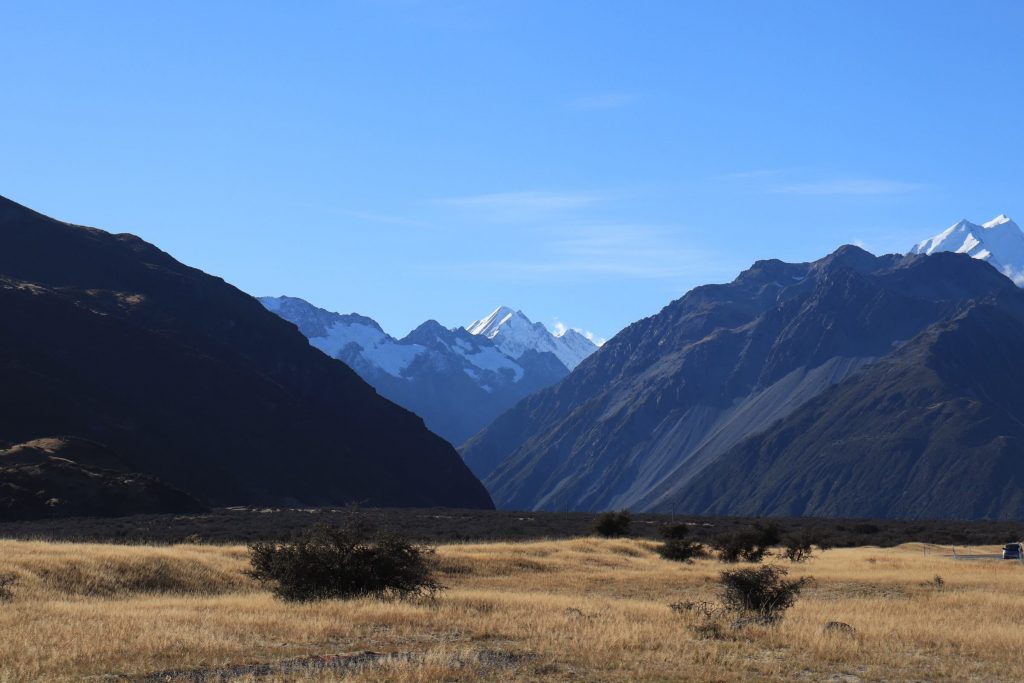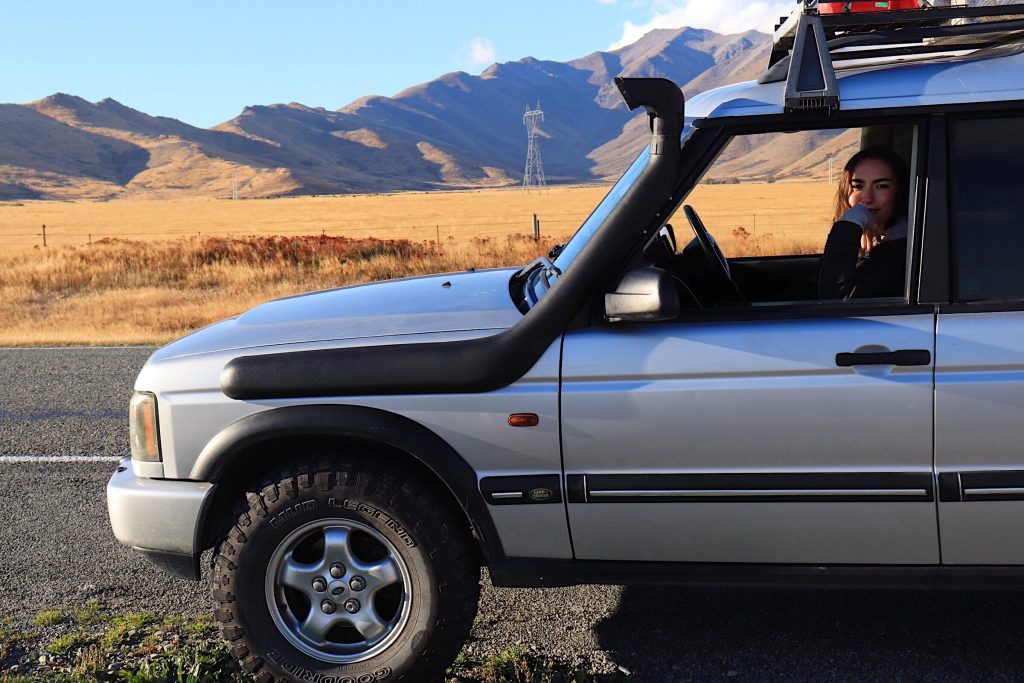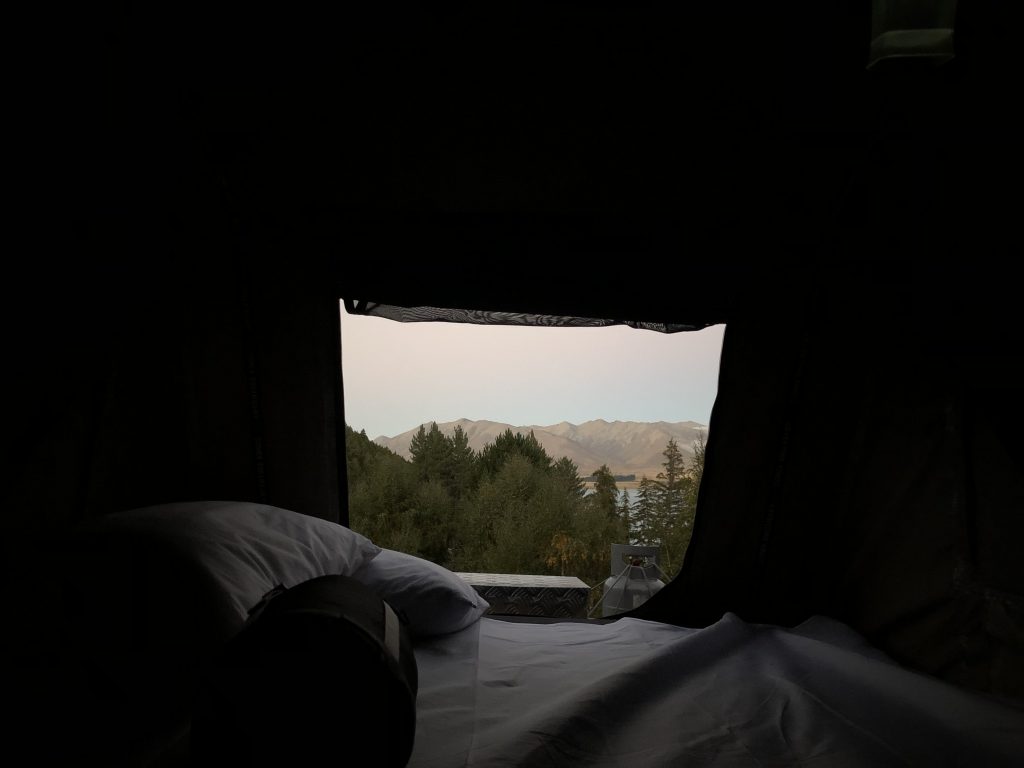
New Zealand is an amazing country full of adventure, crazy scenery, and abundant wildlife.
If you are a thrill seeker or nature junky this should be your next stop!
New Zealand is a country in the southwestern Pacific Ocean consisting of 2 main islands, both marked by volcanoes and glaciation.
Although it is around the size of Japan, New Zealand’s population is just over four million, making it one of the world’s least populated countries.
And nowhere in New Zealand is more than 120 km from the coast, making it to the perfect country if you love surfing, watersports, or just feeling the ocean tide.
Read on for tips and tricks on how to plan the perfect New Zealand road trip.
Find a fully planned 25 Day Itinerary at the bottom!
When should you visit?
SHOULDER SEASON. SHOULDER SEASON. SHOULDER SEASON.
If you can avoid peak times, you’ll be glad you did.
New Zealand goes through four seasons – summer, autumn, winter, and spring – just like any other country that lies in a temperate region on either the Northern or Southern Hemisphere.
New Zealand is in the Southern Hemisphere, so while North Americans are experiencing freezing rain and snow, kiwi’s are soaking it up on the beach.
The seasons in New Zealand broken down into months:
- Summer: December, January, February
- Autumn: March, April, May
- Winter: June, July, August
- Spring: September, October, November
Summer in New Zealand is the most popular time for travelers visiting and kiwis taking holiday. Despite the warm weather, breezy camping, and abundant wildlife, you will face long lines, busier hikes, diminished booking availability and price increases for most for many excursions.
Winter is another popular period as it brings in plenty of tourists and locals looking to hit the slopes! If you are hoping to camp and hike, that is not entirely off the table as New Zealand experiences only moderate snowfall and low temperatures.
Autumn or Spring are great times to go if you can, “not too hot, not too cold, all you need is a light jacket!” – Miss Rhode Island.
Due to these times being in the shoulder seasons, you can expect reduced prices and greater flexibility in your bookings, however since the country expects fewer tourists during this time, not all excursions are available, so check in advance! You should also anticipate a greater risk of unpredictable weather and should plan in some flex days in case of rain.
How to get around and where to stay?
Backpacker Buses:
Backpacker tours are a great option if you are travelling solo or looking to hang in a big crew! Backpacker buses are really fun and super social, expect to make long-lasting friendships with your other bus mates.
These buses offer a hop-on/hop-off service that allows travellers both the flexibility to go at their own pace and the convenience of having activities and accommodation organized for them.
You must purchase a pass for the route you would like to follow on the bus, each company has passes offering routes for the entire country or just the South or North Islands alone.
Each pass provides a minimum number of days for completion of the route, I recommend giving yourself a few extra days of flexibility on either end of your trip so you can add an extra night in any places you like.
You also have to let your driver know which stops you would like to be dropped off and picked up at ahead of time. During peak seasons the buses can become very busy and spots will fill, so make sure to pre-plan as best you can to avoid being stuck somewhere for possibly a couple of days!
The accommodations offered by the buses are always local hostels. Your first night in any city with the bus is always guaranteed. These hostels are booked in advance by the tour company based on how many people are on the bus coming into town.
Car Rentals:
There are many car rental companies throughout New Zealand.
The easiest option is to pick a company with a location at the airport you are flying into.
The price will begin to differ based upon what kind of car you are looking for, where you are picking it up and dropping it off, and of course how many people you are splitting the cost between!
If you are planning on camping throughout the country, then be sure to choose a large enough car to accommodate your backpacks and camping supplies. A smaller car might be appealing price-wise, but might leave you pretty cramped after a couple of hours of driving with your luggage on your lap.
If you are planning on seeing the whole country, travelling between the North and South Islands of New Zealand means crossing the Cook Strait. The only way to do this with a vehicle is by taking a ferry with either the Interislander or Bluebridge which both arrive and depart from Picton and Wellington.
The approximate price range for taking the ferry with a vehicle:
- 1 x sedan (includes 1 driver): $173 – $248
- 1 x campervan up to 5.5m (includes 1 driver): $173 – $248
- 1 x campervan 6m (includes driver): $243 – $328
- 1 x motorhome 7m (includes driver): $313 – $408
The steep prices for crossing the Cook Strait with a vehicle are what lead me to suggest renting two different cars per island. Pick up your first car in Auckland when you arrive on the North Island and pick up your second car in Picton upon arrival on the South Island from the ferry, or in Christchurch if you opt to fly between the two.
Something to consider is the price increase of your rental for dropping your car off in a different location than where you picked it up.
To avoid this, plan a circular route on each island and take a flight between the two.
Road map for 3 weeks in New Zealand:
Considering a Campervan?
This would be my personal recommendation. If you can plan ahead and have a buddy for the road set up, then begin looking for campervans!
There are different styles to suit each kind of traveller.
The following companies offer a variety of options at differing price points:
Some notes on each,
Jucy, Travellers Autobarn, and Britz are relatively comparable in price and quality.
If you have the funds to do so, choose a campervan with a raised roof. This allows you to stand inside the van at all times, so you can cook and eat your breakfast inside the van before braving the brisk morning air.
I have rented with Britz before and it was a smooth and easy experience, I would definitely recommend this company again.
Jucy is known for their outlandish purple and green vans, so if you don’t mind driving around like the hulk then take this option.
Wicked Campers are extremely hit or miss. If you are at all squeamish about renting a campervan, do not take this option or even begin looking into their customer reviews online.
Wicked Campers are undoubtedly the cheapest option and it shows! They come equipped with the bare essentials that sometimes work and sometimes don’t. Their vans are each uniquely spray-painted with a different vibe to each.
If you are the relaxed traveller, with an optimistic attitude, and a tight budget, this is the campervan for you.
Intrepid Rentals offer a different ‘campervan’ experience entirely. These are 4×4 Land Rovers with rooftop tents instead.
They are a small company with a quick and friendly customer service team. All the Land Rovers are standard drive, so if you don’t know how to drive stick, either get busy learning or don’t consider this option!
Taking a truck allows you to drive along some beautiful backroads and feel a lot more comfortable driving within towns.
The rooftop tent is a super fun way to camp but best suited for the warmer months. The trucks are equipped with cooking supplies in the back and can even come with a mini-fridge if requested in time.
The downside to this option is that if you are not in the middle of the summer, you will always have to cook and dress outside the truck, during the fall and winter this can be quite cold every day.
The rooftop tent will always have to be reassembled and disassembled, so quick getaways will not be possible!
The upside, you’ll feel like a total local driving in this amazing country and leave with some serious stick-shift skills after driving a few mountain ranges in this bad boy.

Finding your campsite:
Follow the country’s rules.
Download Campermate.
This app will become your best friend while you road-trip this beautiful country.
You can ‘favourite’ potential campsites beforehand, and the map is still accessible while without data!
The app breaks down different campsites by colour according to their cost and amenities provided.
- Green = Free, with no facilities (get used to poops in the woods)
- Blue = Low cost, typically 10$ and there will be a toilet + maybe a sink
- Purple = Pricey, these are usually ‘holiday parks’, and have full kitchens, bathrooms with showers, WiFi, power
If you are rolling on a strict budget, then Green campsites will be your go-to and you should keep an eye out for outdoor sinks, rec centres, or community locations where you can wash up and do some dishes.
However, blue campsites are a happy medium and the price you pay is typically per car and placed in an honesty box at the front of the site.
Purple sites are not somewhere I’d recommend staying on the regular if you are looking for a true woodsy experience, but they are a nice treat every now and then to recharge and rest up.

Campsite Recommendations:
- The free campsite beside Lake Pukaki
- Outside of Queenstown: 12 Mile Delta Campsite, Moke Lake Campsite
- In Te Anau: Henry Creek Campsite
- In Wanaka: Albertown Campsite
- The night of Roy’s Peak: park in the parking lot beneath the mountain to sleep for a couple of hours before you wake up at 3 am for the start of your hike
- In Punakaiki: Beachside holiday park
- In Abel Tasman National Park: Marahau Beach Campsite
- In Kaikoura: Peteka Beachfront Campsite
Your packing list:
Okay so you’re going, need an itinerary?
Please leave a comment with any questions or suggestions you may have!